Invisalign® for Teens
Existing Patients
(740) 344-4549
New Patients
(740) 212-1897

Invisalign® offers a modern, discreet alternative to traditional orthodontics by using a sequence of clear, custom-made aligners to move teeth into healthier, more balanced positions. Designed with advanced digital planning and manufactured with precision, this approach can address a wide range of alignment issues while keeping daily life largely uninterrupted. Our goal is to present practical, evidence-based information so you can understand how clear aligners work and whether they may fit your dental goals.
Invisalign® treatment begins with a comprehensive assessment and a detailed digital plan. Using 3-D imaging and proprietary software, the clinician maps a series of controlled movements for each tooth. Those planned movements are translated into a set of sequential aligners that exert gentle, targeted forces to shift teeth step-by-step toward the predetermined final positions.
Each aligner in the series is worn for a prescribed period—typically about one to two weeks—before being replaced by the next one. Because the plan is mapped end-to-end during the planning phase, the process offers a clear roadmap for how teeth are expected to move over the course of treatment. This level of predictability helps clinicians anticipate challenges and make adjustments as needed.
Manufacturing tolerances and material properties matter. The aligners are fabricated from a proprietary, medical-grade polymer engineered for clarity, resilience, and biocompatibility. These materials maintain shape under typical oral conditions while delivering steady, comfortable forces—an important factor in both the effectiveness and the patient experience of treatment.

Invisalign® for Teens

Invisalign® for Brides

Invisalign® for Travelers
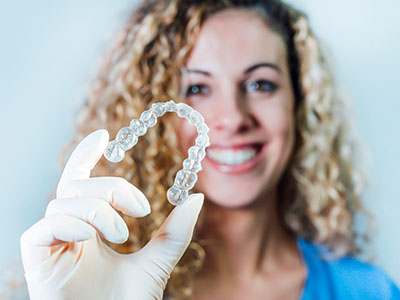
Before & After Photos
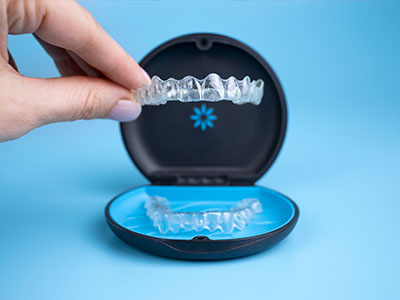
Invisalign® Videos
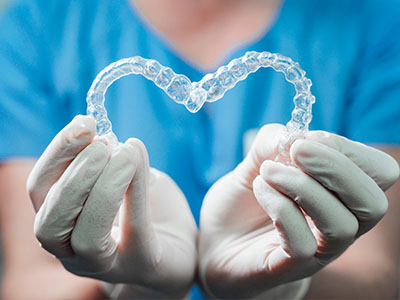
FAQs
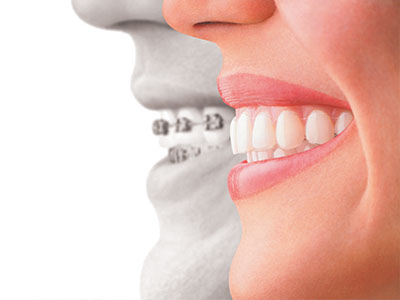
Invisalign® vs Braces
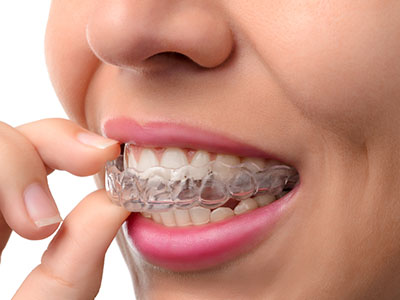
Invisalign® vs Direct-To-Consumer Aligners
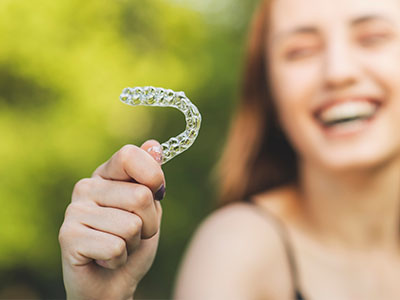
Is Invisalign Right For Me?

Invisalign Costs
Before any aligners are made, your dentist will perform a thorough clinical evaluation. This typically involves a digital scan of your teeth, intraoral photographs, and a discussion of your goals and medical history. The scan replaces traditional impressions for most patients and produces a highly detailed 3-D model that becomes the basis of the treatment plan.
With the digital model, your provider can demonstrate a projected movement sequence and, in many cases, show a visual preview of the anticipated outcome. This planning phase is also when we identify whether adjunctive measures—such as attachments, interproximal reduction (slight enamel shaping), or retention strategies—may be necessary to achieve the best result.
A collaborative conversation follows: the clinician outlines the timeline, explains compliance expectations, and discusses routine monitoring appointments. Clear communication at this stage helps set realistic expectations and ensures that the plan aligns with your lifestyle and oral health needs.
One of the defining features of clear aligners is removability. Patients typically remove aligners to eat and to perform daily hygiene, which reduces the dietary restrictions and cleaning challenges associated with fixed braces. That said, aligners must be worn for the recommended daily hours—usually around 20 to 22 hours—to ensure steady progress.
Cleaning routines are straightforward: remove aligners to brush and floss, and follow the manufacturer’s guidance for rinsing or gently cleaning the aligners themselves. Keeping both the teeth and the aligners clean minimizes the risk of staining and helps preserve oral health throughout treatment. Regular check-ins with the dentist allow for refinements to the plan and reinforcement of proper care techniques.
Soreness is possible when transitioning to a new aligner, but it is generally short-lived and less intense than the discomfort some experience with traditional wire-and-bracket systems. Over-the-counter pain relievers and soft foods for a day or two are standard approaches if mild sensitivity occurs after an aligner change.
While many people pursue Invisalign® for its aesthetic benefits, aligning teeth can also improve oral function and long-term dental health. Properly aligned teeth are easier to clean, which reduces risk factors for decay and periodontal disease. Correcting bite relationships can also distribute chewing forces more evenly and reduce strain on the jaw joints and teeth.
Clear aligners are versatile enough to manage a broad spectrum of alignment issues—from crowding and spacing to certain bite irregularities—when administered by a trained clinician. The controlled, incremental nature of movement allows for predictable corrections, and modern digital workflows improve the accuracy of those corrections compared with earlier-generation approaches.
In some cases, aligner therapy is used in combination with other dental treatments—restorative work or periodontal care, for example—to create a comprehensive plan that addresses function and aesthetics together. Working with a practice that integrates restorative and orthodontic planning ensures that alignment changes support broader oral health goals.
Invisalign® is appropriate for many adolescents and adults, but candidacy depends on the specific character of each case. Mild to moderate crowding, spacing, and many bite discrepancies are commonly treated with clear aligners, whereas very complex skeletal issues may require alternative orthodontic approaches or collaboration with a specialist.
A thorough exam is the only way to know for sure. During your consultation, the dentist evaluates tooth positions, bite relationships, periodontal health, and any restorative considerations. This evaluation helps identify a safe, effective path forward and whether aligners alone are sufficient or if adjunctive procedures might be recommended.
If you’ve had previous dental work—crowns, bridges, implants, or significant restorations—those factors are integrated into the treatment plan. A customized approach ensures that tooth movement protects existing dental investments and supports a stable, long-term result.

Your first visit focuses on understanding your objectives and the health of your smile. We use precise imaging and a full oral exam to build a treatment plan tailored to your needs.
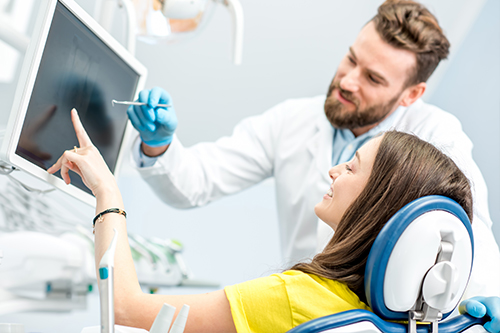
Advanced software allows us to visualize the likely outcome and the sequence of movements to get there. This preview helps you see the expected progression and set clear milestones for care.
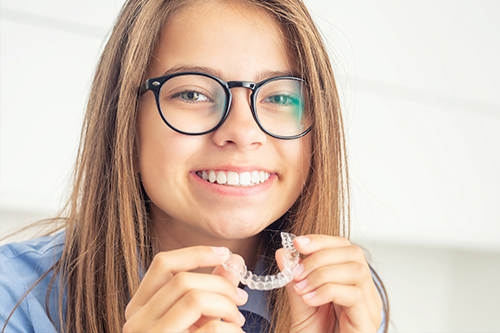
Each aligner is manufactured to match your plan precisely. The result is a discreet, form-fitting appliance that guides teeth with incremental adjustments designed for comfort and control.

Throughout treatment, scheduled visits allow us to monitor progress and make necessary refinements. The clinician remains available to answer questions and ensure you stay on track toward the planned outcome.
We include a selection of instructional and informational videos that illustrate aspects of aligner treatment and patient experiences. These resources are intended to supplement in-office consultations and provide additional context about the process.
Explore the true stories and journeys of several Invisalign® patients
*Invisalign® is a registered trademark of Align Technology, Inc.
At Brian Howe DDS, Family Dentistry, we aim to provide clear, evidence-based guidance so patients in Newark and the surrounding community can make informed choices about orthodontic care. If you’d like to learn more about whether clear aligners are a fit for your smile, please contact us for more information and to schedule a consultation.
Invisalign is a clear aligner system that straightens teeth using a series of custom-made, removable trays. Each tray is designed to make small, controlled adjustments so teeth move gradually toward a planned final position. The treatment is an alternative to traditional brackets and wires and relies on digital planning to map outcomes.
Because the aligners are nearly invisible and removable, many patients choose them for aesthetic and lifestyle reasons. The system is manufactured from a medical-grade polymer engineered for clarity and resilience. Clear aligner therapy is intended to be a predictable, minimally invasive option when supervised by a trained clinician.
Treatment begins with a detailed digital scan and software-based planning that maps each tooth's proposed movements from start to finish. That plan is translated into a sequence of aligners, each of which applies targeted forces to specific teeth to achieve the next step. Wearing each aligner for the prescribed period allows the teeth to respond in a controlled, incremental way.
Predictability depends on accurate planning, precise manufacturing tolerances, and patient compliance with wear time. The materials used retain their shape under normal oral conditions to deliver steady force. Regular monitoring lets the clinician verify progress and make adjustments if deviations occur.
Invisalign is appropriate for many adolescents and adults who have mild to moderate crowding, spacing, or bite irregularities that can be managed with aligner therapy. Very complex skeletal problems or severe malocclusions may require orthodontic appliances or collaboration with a specialist. The presence of good periodontal health and a commitment to wearing aligners as directed are important factors in candidacy.
Existing dental restorations, such as crowns, bridges, or implants, are taken into account during planning so tooth movement protects those investments. In many cases aligners can be integrated into a broader restorative or periodontal plan to achieve both functional and aesthetic goals. A thorough clinical exam and diagnostic records are the only way to determine whether aligner therapy alone is appropriate.
At Brian Howe DDS, Family Dentistry the consultation begins with a clinical exam, intraoral photographs, and a digital scan that replaces traditional impressions for most patients. We discuss your concerns, review your dental and medical history, and document tooth and bite relationships to build a customized treatment plan. The digital model allows the clinician to demonstrate a projected sequence of movements and in many cases provide a visual preview of the anticipated outcome.
During the consultation we also identify any adjunctive needs, such as attachments, interproximal reduction, or periodontal care that may be required to achieve the best result. The clinician outlines the proposed timeline, explains daily wear expectations, and reviews follow-up appointment intervals for monitoring. Clear communication at this stage helps set realistic goals and ensures the plan fits your lifestyle and oral health needs.
Treatment duration varies according to the complexity of the case, patient age, and adherence to recommended wear time, but many patients complete aligner therapy within about six to eighteen months. Simple cosmetic corrections often finish on the shorter end of that range while more extensive tooth movements take longer. The clinician provides a personalized timeline based on the initial plan and diagnostic findings.
Aligners are typically changed every one to two weeks according to the prescribed schedule, and regular check-ins allow the provider to confirm progress and make refinements. If adjunctive procedures or restorative work is needed, sequencing can affect overall timing. Consistent wear for the recommended 20 to 22 hours per day is a major factor in staying on schedule.
Good oral hygiene during aligner therapy begins with removing trays for meals and brushing and flossing before reinserting them to minimize plaque buildup and staining. Aligners should be rinsed after removal and cleaned daily using the manufacturer’s recommended method or a soft toothbrush and mild, nonabrasive cleanser. Avoid exposing aligners to hot water or harsh chemicals that can warp or discolor the material.
Store aligners in their case when not in use to reduce loss or damage and keep a consistent cleaning routine for both teeth and trays. Regular dental checkups and professional cleanings remain important throughout treatment to monitor periodontal health and caries risk. Promptly report any persistent irritation, fit issues, or damage to your aligners so the clinician can address them.
Mild soreness or pressure is common for a day or two after starting a new aligner and generally indicates that the appliance is working to shift teeth. Most patients describe the discomfort as less intense than the pain sometimes associated with new wire-and-bracket adjustments. Over-the-counter pain relievers and a short period of soft foods usually provide sufficient relief when needed.
If discomfort persists beyond a few days, if a tray feels unusually tight, or if you experience sharp pain or soft-tissue injury, contact your dental team to evaluate fit and progress. The clinician can adjust the plan, remake a tray, or provide guidance to alleviate symptoms. Timely communication helps prevent small issues from becoming treatment interruptions.
Attachments are small, tooth-colored bumps bonded to teeth to provide additional grip and leverage for aligners during specific movements. Interproximal reduction, or IPR, involves conservative reshaping of enamel between teeth to create space for alignment in crowded cases. These techniques are common, predictable adjuncts that enhance the ability of aligners to achieve planned outcomes.
Other adjuncts can include elastics to correct bite relationships, power ridges to influence root movement, or temporary anchorage devices in select situations. All adjunctive procedures are discussed during treatment planning so patients understand their purpose, duration, and how they fit into the overall plan. When used appropriately, these methods expand the range of problems that clear aligners can effectively address.
Yes. Invisalign is often coordinated with restorative care, periodontal therapy, or implant planning to support overall oral health and a stable, functional result. Aligning teeth before restorative procedures can improve access, esthetics, and long-term outcomes for crowns, bridges, and veneers. Periodontal health is evaluated and treated as needed before and during movement to protect soft tissues and bone.
Sequencing and interdisciplinary communication are important to avoid compromising restorations or periodontal status during tooth movement. The practice integrates restorative and orthodontic planning to ensure that alignment changes support broader treatment goals. Collaborative planning helps achieve a comprehensive, durable result that balances function and esthetics.
Retention is a critical phase after active alignment; retainers are used to hold teeth in their new positions while supporting tissues stabilize. Retention protocols vary, but many patients wear retainers full time initially and transition to nighttime wear as advised by the clinician. Without appropriate retention, teeth can gradually shift back toward their original positions.
Long-term follow-up allows the dental team to monitor stability and address changes linked to aging, oral habits, or dental work. For patients with bruxism or other functional concerns, additional appliances or adjustments to the retention plan may be recommended. At Brian Howe DDS, Family Dentistry we emphasize retention and periodic monitoring as essential steps to preserve the benefits of aligner treatment.
Our friendly and knowledgeable team is always ready to assist you. You can reach us by phone at (740) 344-4549 or by using the convenient contact form below. If you submit the form, a member of our staff will respond within 24–48 hours.
Please do not use this form for emergencies or for appointment-related matters.
